

It is sickening, tiring and frustrating to year after year deal with racism and bigotry. What does it matter whether directed against darker skinned peoples, people from other cultures, people designated as less than equal due to a caste system or the fact that some group wants the resources or land that the other group has and, so, denigrates them to get it? It’s all the same assault upon another tribe of people and this behavior must stop!
There are around fifty signs of culture identified through anthropolpgy. They are universals and span many centuries. They include body adornment, use of jewelry, use of cooking and forty-seven other means that prove equality with every other human. Yes, we all have these fifty ways to express ourselves and carry out life, and the vision of the sub-human category must stop its giving others a less than human identity.

One of the groups that has been ideologically crushed and slaughtered for centuries are the Navajos. All the same, the Navajos have prevailed and have contributed to cultures across the world with their outlooks on life, lifestyles, along with other contributions. For example,
Native Words, Native Warriors
The National Museum of the American Indian honors American Indian Code Talkers. This is a companion website to the traveling Smithsonian Institution exhibition, Native Words, Native Warriors.

Private First Class Preston Toledo (left) and Private First Class Frank Toledo, Navajo Code Talkers. 1
During World War I and World War II, hundreds of American Indians joined the United States armed forces and used words from their traditional tribal languages as weapons. The United States military asked them to develop secret battle communications based on their languages—and America’s enemies never deciphered the coded messages they sent. “Code Talkers,” as they came to be known after World War II, are twentieth-century American Indian warriors and heroes who significantly aided the victories of the United States and its allies.
Protecting The Homelands
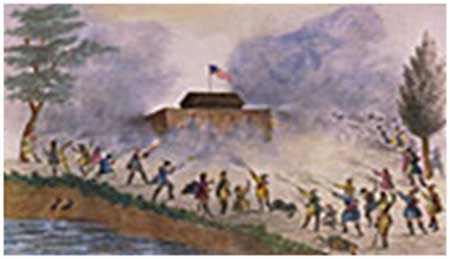
“Attack of the Seminoles on the Block House.” Many American Indian tribes fought against the United States to defend their lands and families. 2
American Indian nations have always fought to defend themselves. Anyone who threatened their families, cultures, and lands was their enemy, including the United States. As a result of wars with the United States, many tribes were forced off their lands, relocated, or confined to reservations where they endured poverty, racism, and attempts to erase their traditional cultures. Languages were particularly targeted in the government’s efforts to change the American Indians’ ways of life. Beginning in the late 1800s, Indian children were forbidden to speak their own languages and punished in government- and church-supported boarding schools if they did.
Most American Indians were not legally considered citizens of the United States until 1924. Even then, some states refused to let American Indians vote until as late as the 1950s.
Despite this tragic history, many American Indian men and women have served in all branches of the military. In many conflicts and wars, including World War I and World War II, American Indians honorably defended their homelands and the United States.
Twentieth – Century Warriors
American Indian Code Talkers were communications specialists. Their job was to send coded messages about troop movements, enemy positions, and other critical information on the battlefield. Some Code Talkers translated messages into their Native languages and relayed them to another tribal member. Others developed a special code within their languages that they used in combat to send important messages.
It became serious when we started to develop that code. You know, they wouldn’t let anybody in there. They kind of shut us out, secretly you know. Trying to talk about it back and forth. And there’s lots of guards around.—John Brown, Jr., Navajo Code Talker, National Museum of the American Indian interview, 2004
This major took us into a great big room and he said, ‘you guys are going to have to make up a code in your own native language,’ that’s all he said. He left, closed the door behind him and locked the door. We didn’t know what to think, you know? What does he mean by making a code in our own language? We sat there for about three or four minutes thinking, how are we going to develop this code?—Chester Nez, Navajo Code Talker, National Museum of the American Indian interview, 2004
Meet Code Talker Carl Gorman
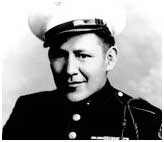
Carl Gorman, 1942. 3
Carl Gorman was a Navajo Code Talker in World War II. Carl grew up on the Navajo reservation in Arizona and served in the United States Marine Corps in the war against Japan. Throughout this website, you can follow his life story.
Go to Native Words Native Warriors – National Museum of the American Indian
or http://www.nmai.si.edu/education/codetalkers/html/ to learn more.
This code talking was just one of their contributions to the world to help in WWI and WWII. Yet there is so much more of all that they have contributed to us all in toto. A small part is their artwork. So I am proud to donate this Navajo turquoise and silver belt buckle with exemplary leather craftsmanship on the attached belt to The Six Nations Indian Museum: Mohawk Oneida Onondaga Cayuga …


It shows the beauty and goodness of life going forward rather than through wars and denigrating peoples who come from a different culture. It shows about what we can accomplish when we set our minds on creating something that shows the best of life rather than through tearing it apart for others as we reject their cultures and try to garner their resources for ourselves.
Here’s what I mean. Let’s create something of value rather than expend ourselves in brutality. … The images speak for themselves:



From the turn of the century – around a hundred years ago.

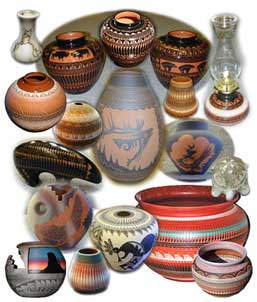
The Navajo and other Native Americans also teach us ideas about the ways to best live. For example:
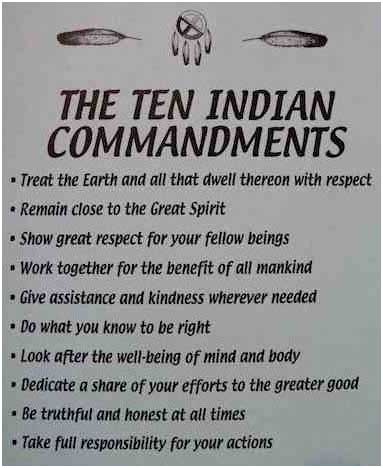
I have a problem with: Be truthful and honest at all times.” No, I will not as I have a sliding scale of values concerning which protection of life is the ultimate one, a value for which I’m willing to die if it would come to that.
Here are two hypothetical examples: I have Jewish adults and their children, during WWII, hiding in my basement in Germany. I feed them and tend them. Then Nazis come to my door and knock to ask whether I know where Jews might be hiding in Germany.
Of course, I’m going to call Jews “pigs,” “disgusting monsters” and such. What else? Be truthful and have us all killed in a concentration camp?
If an elderly woman leaves a bank with some money and is chased by a gang of teenaged thugs and I see her hide behind a dumpster in the alley behind me, I will redirect the would-be thieves down the street when they ask about her whereabouts from me.
Yes, one has to be careful to always act with the highest protective, compassionate and ethical standard. This intention does sometimes require lies in my opinion.
Other requirements are also necessary. We must always try to serve humanity and the natural world on which we depend for our very lives. …

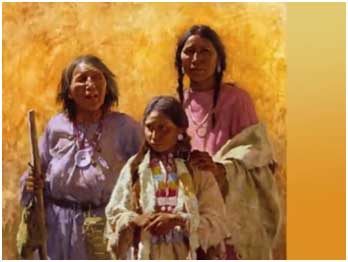

Let us all try to find a better path forward than the mainstream one currently in place that is largely based on consumerism. We have to actively pursue an alternative, one largely supported by the Navajos and other natives around the world!
It will be hard to “pull off” as Ugo Bardi implies:
Yet, something changed in recent times. We may see the appearance of “world modeling” in the 1970s as the serendipitous awakening of consciousness in the human colony. Digital computers made it possible to perform studies such as the 1972 “The Limits to Growth” that modeled society on the basis of quantitative data and projected the results to the future. It was the first time in history that society could really plan for the future. In particular, the models identified a phenomenon scarcely known before: it was called “overshoot”, the tendency of society to overexploit its resources and then collapse. The models could be used to plan ahead and avoid collapse.
But, as well known, these studies had little or no impact and the world’s human colonies continued their blind path toward collapse. This is probably understandable. The emergence of complex structures such as brains is driven by evolutionary competition. Humans developed their large brains as tools for inter-group sexual competition. But states or industrial companies compete by exploiting the available resources as fast as possible. They have no advantage in the capability of planning for the long term, especially when the results of the planning is that they should slow down the exploitation rate. Doing that would only give more chances to their competitors who don’t. So, the behavior of human colonies remains dictated by one very simple rule: grow as much as possible and don’t care about anything else. – From Make The Anthill Great Again! The Ant Colony And The Human Ones … Ugo Bardi teaches physical chemistry at the University of Florence, in Italy. He is interested in resource depletion, system dynamics modeling, climate science and renewable energy. Contact: ugo.bardi(whirlything)unifi.it . He blogs at Cassandra’s Legacy where this article originally appeared.
As child, I heard a Quaker (Religious Society of Friends) statement from my Quaker pacifist parents that was “Simple is as simple’s kind.” Well, we’re past the kindness phase as the main gist. Sorry if you disagree.
Kindness always has to be present, but the bigger picture means that we all do whatever we can to support the Navajo way of life that supports the natural world on which we all depend to stay alive. We must stop tearing it apart for profits for our companies and our own personal gains! If we can’t – just watch and see the outcomes in times forward!
I grieve and grieve again if we can’t find a better way forward than more and more dismantling the natural world for support of excess consumerism going globally in scale as my generation dismantles the natural world. There must be a better path forward than this one.
I have a grandchild. Less than a year old, she is a delightful little being learning to become her fuller self. … What is my generation leaving for her and her possible offspring? What is left as the world is more and more disassembled?
Watch California fall apart: News | NASA Data Show California’s San Joaquin Valley Still Sinking
https://www.jpl.nasa.gov/news/news.php?feature=6761
Feb 28, 2017 – Areas of California’s San Joaquin Valley continue to sink in … Groundwater Pumping Causing Subsidence, Damaging Water Infrastruct …
I have read that an extinction event minimally involves 70-75 percent of all species. Meanwhile:
Holocene extinction – Wikipedia
https://en.wikipedia.org/wiki/Holocene_extinction
The Holocene extinction, otherwise referred to as the Sixth extinction or Anthropocene extinction, is the ongoing extinction event of species during the present Holocene epoch, mainly due to human activity.
Will Humans Survive the Sixth Great Extinction? – National Geographic
news.nationalgeographic.com/…/150623-sixth-extinction-kolbert-animals-conservatio…
Jun 23, 2015 – Journalist Elizabeth Kolbert’s book The Sixth Extinction won this year’s Pulitzer Prize for general non-fiction. We talked with her about what …
Seven generation sustainability – Wikipedia
https://en.wikipedia.org/wiki/Seven_generation_sustainability
Seven generation sustainability. … It originated with the Iroquois – Great Law of the Iroquois – which holds appropriate to think seven generations ahead (about 140 years into the future) and decide whether the decisions they make today would benefit their children seven generations into the future.
As Pratap Antony wrote in Consuming Passions And Environment, “A very important aspect of careless consumption is the ecological impact on our planet is – If we keep consuming, what are we giving back?”
Yes, what? … So go, go against prevailing trends. What other course forward makes sense, especially if you want to support future generations from a variety of cultures and societies in their bid for life?
Sally Dugman is a writer in MA, USA.















































